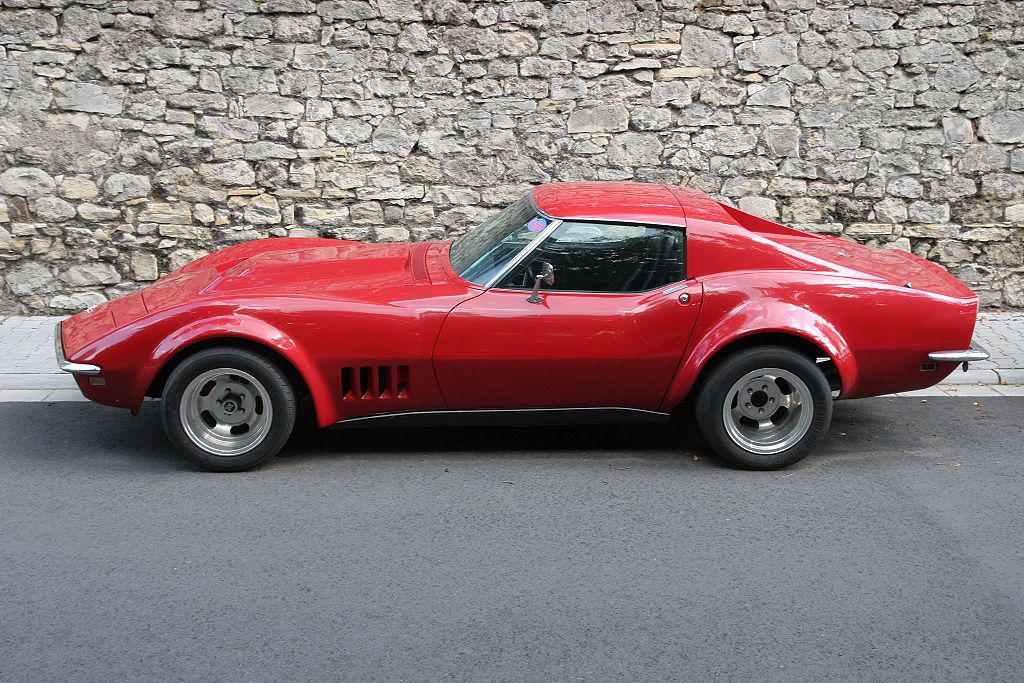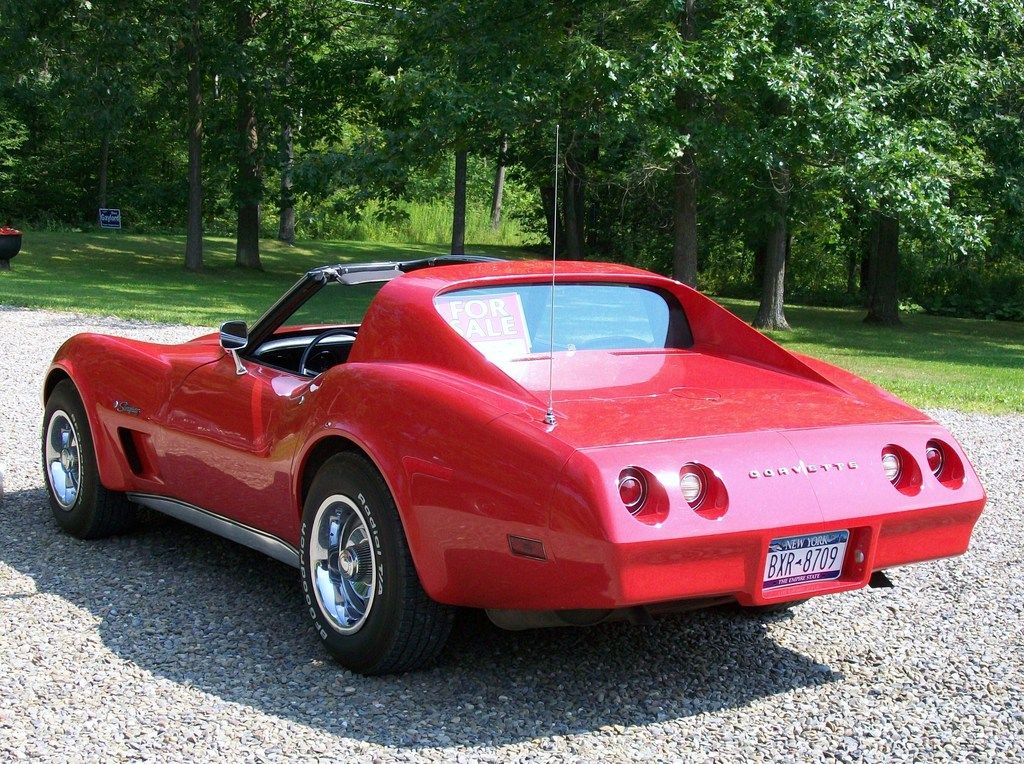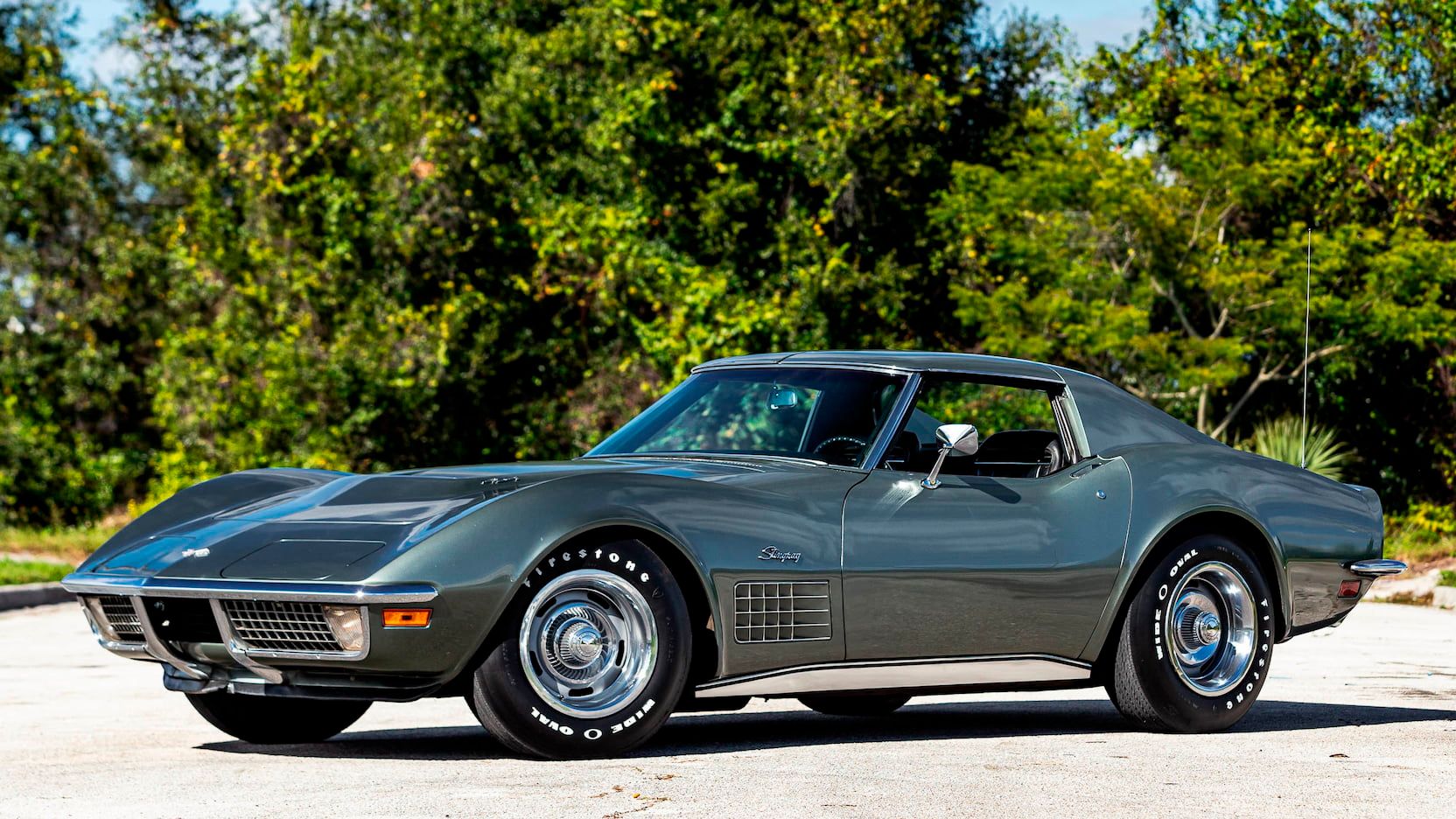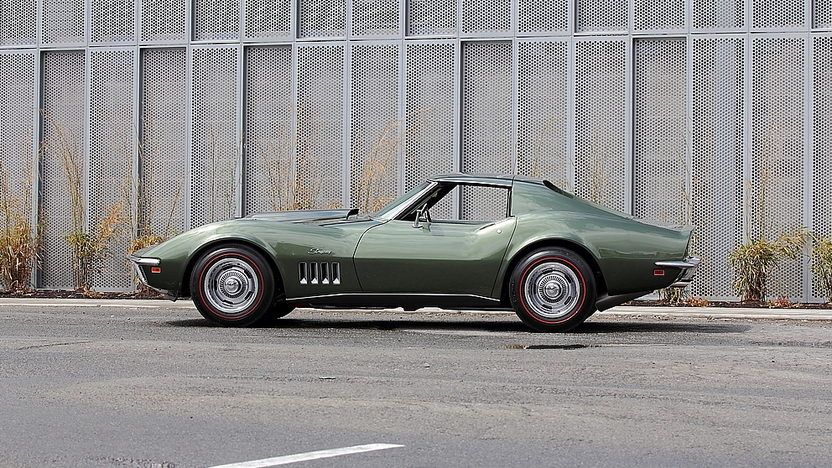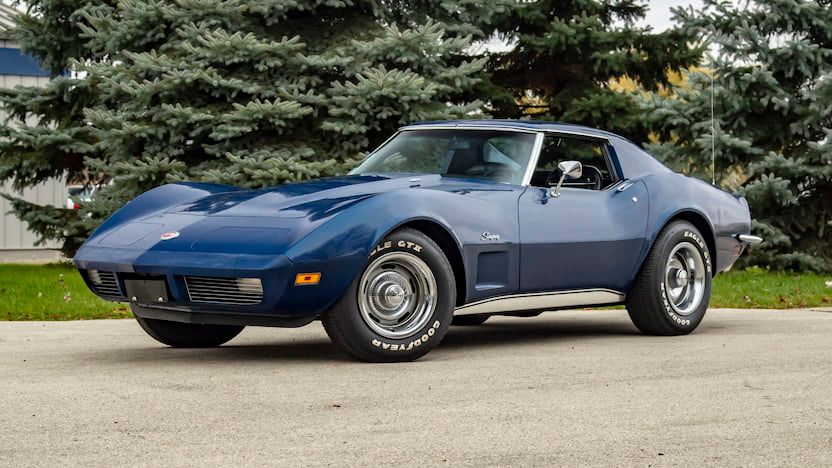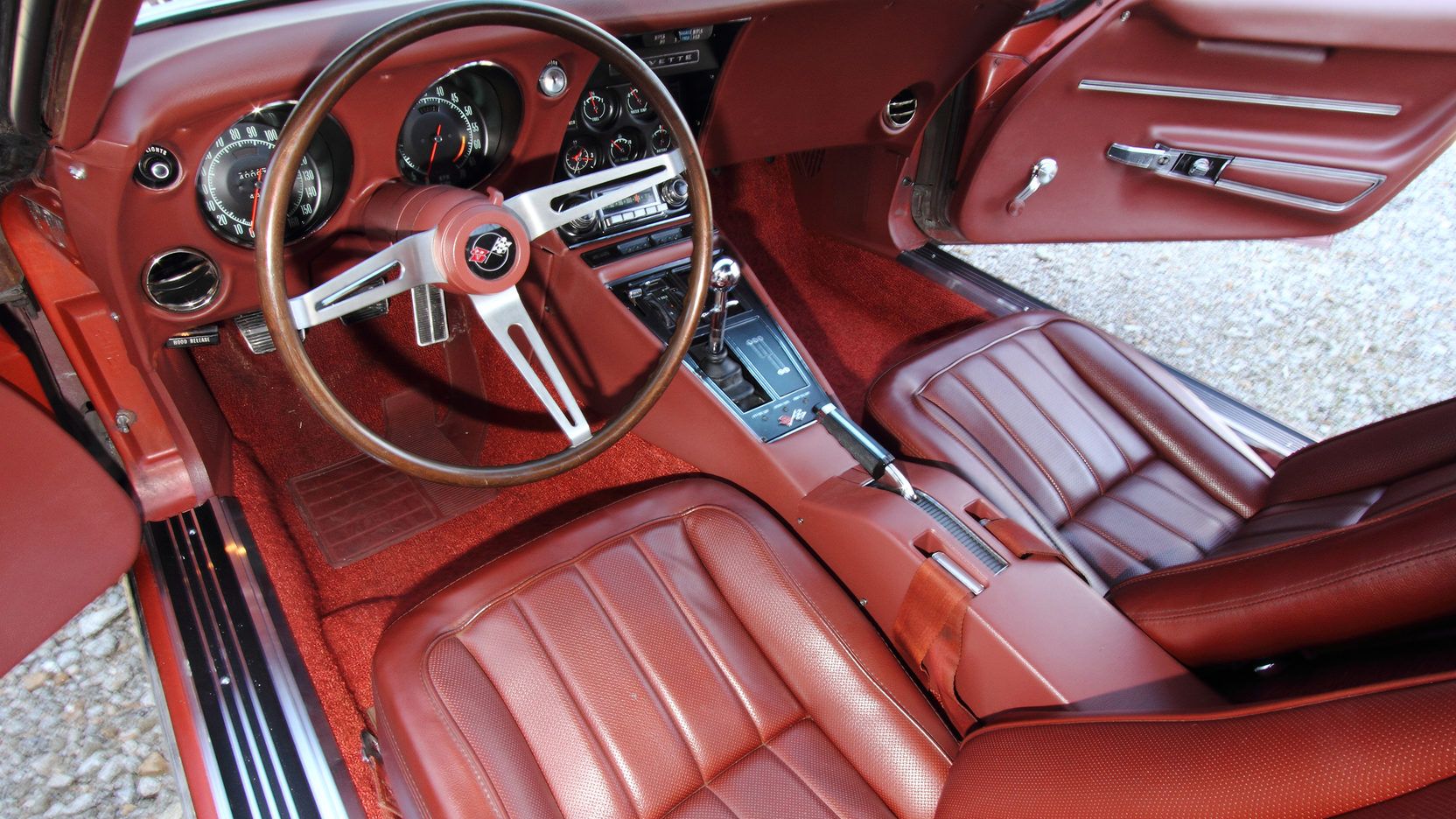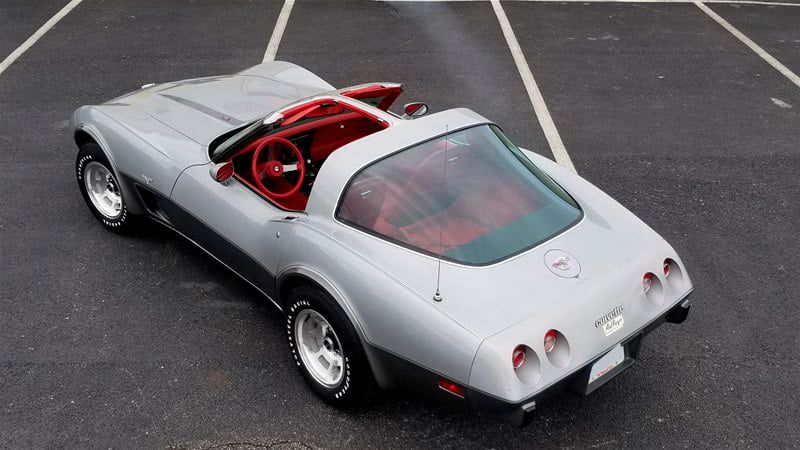Debuting at the height of the Muscle Car era, the third-generation Corvette remains a popular and reasonably priced option for those looking for a piece of automotive history. It featured new exterior design, a new interior while the chassis and power plants were carried over from the previous generation. Sadly, it’s a car with a history that spans from the high end of the power spectrum to the low end near the end of its run thanks to the nation’s oil crisis.
Nicknamed “The Shark”, the C3 was designed after Larry Shinoda’s Mako Shark II concept and was the last Corvette to wear the “Stingray” badge until 2014. Running for 15 model years from 1968 to 1982, it remains the longest run for a single generation of Chevy’s Halo car.
Chevrolet Corvette
- All-New Design
- T-Tops Offered As An Option
- Stays True to the "Mako Shark" Concept
- Model: Chevrolet Corvette C7
- Engine:: LT1 V8, LT4 Supercharged V8 and LT5 Supercharged V8
- Power Output: 450hp to 755hp
- Torque: 460 LB-FT to 715 LB-FT
- Transmission: 6-Speed and 8-Speed automatic, 7-Speed manual
- Driveline: Rear-Wheel Drive
- Powerful Base Engine
- Several Engine And Transmission Options
- Beautiful Interior Design
- Difficult Getting In And Out
- No Glove Box
- Later Models Suffered From Drop In Power Due To EPA Regulations
C3 Corvette Stingray Performance And Capability
The C3 had a tough act to follow coming behind the C2 Corvette and its legendary models such as the 1967 Corvette Stingray L88 and the 1963 Corvette Split Window. But it held its own by putting out performance numbers that were impressive for the time. Chevrolet seemingly more than most automakers likes to retain some continuity in its vehicles by retaining bits from the outgoing car. The C3 was no different as the chassis was brought over from the C2. It retains the fully independent suspension and four-wheel disc brake system.
Engines were also carried over from earlier cars. Base engines for 1968 were 5.4L 327 cubic-inch V-8 that put out a healthy 300 horsepower. Those in the market may get a little overwhelmed when looking at the optional engines as there are close to a dozen different engines across multiple iterations across multiple model years ranging from the aforementioned 327 cubic-inch V-8 to a 454 cubic-inch V-8.
Engine Options | Power Output |
5.4-liter 327ci V8 | 300hp |
5.4-liter 327ci V8 | 350hp |
7.0-liter 427ci V8 Big Block | 390hp |
7.0-liter 427ci V8 Tri-Power | 400hp |
7.0-liter 427ci V8 Tri-Power | 430hp |
The rare 1969 Vette optioned with the ZL1 all-aluminum V-8, got an engine that produced numbers that would be powerful by today’s standards. It produced 430 horsepower while weighing 25 pounds less than the small block V-8s available at the time. By several accounts, this power number may have been underrated by as much as 100hp. Either way, it was enough to move this piece of 60s muscle from 0-60 mph in just under six seconds.
The ZL1 special engine option was very expensive at $4718.00 and cost as much as the 1969 Corvette coupe priced at $4763.00. The required options nearly doubled the price of the Corvette coupe to more than $10,000.00. But all that money got you the latest and greatest as this marked the first time a Big Block Chevy engine was equipped with an aluminum block, aluminum heads, a dry sump oiling system, and a solid lifter camshaft. Buyers also had their choice of three different transmissions. Three and four-speed manual gearboxes were available along with the optional Turbo Hydramatic three-speed automatic transmission.
Sadly, the nation’s oil crisis in the 1970s would all but kill the thing that made these cars great; the big power they created. Tighter EPA regulations on emissions saw power cut nearly in half. In 1973 the optional big block was still available, but power was down to 270 horsepower. Now compare that to the more than 430 horsepower these engines were producing just a few years earlier. 1975 marked a low point as this was the lowest-powered corvette ever, with base power output being at 160 horsepower.
Exterior Design
In 1965, designer Larry Shinoda created a show car that would go on display at various car shows around the nation. The “Shark” design featured wider fenders and a much sharper nose that housed pop-up headlights that were vacuum-controlled versus electronically in the previous cars. It also featured new hide-away windshield wipers tucked behind a vacuum door all in a much lower front end.
1968 saw the debut of the popular T-tops and was the first year this was ever available on Corvette. Buyers could choose between coupe and convertible, but the coupe was now a “notchback” fitted with a removable rear window along with T-tops. Convertible models come with the soft folding top while an auxiliary hardtop with a glass rear window was offered as an option. Buyers had 10 different factory colors to choose from including the new for the 1968 model year, Corvette Bronze.
Available Colors | Rally Red |
Polar White | |
International Blue | |
British Green | |
Safari Yellow | |
Silverstone Silver | |
Cordovan Maroon | |
Tuxedo Black | |
LeMans Blue | |
*New for 1968 | Corvette Bronze |
Chevy focused on a much cleaner exterior look for this generation. This was evident in the flush door handles that featured a separate release button. The wider front fenders had functional engine cooling vents while side vent windows were eliminated from all models, and replaced with “Astro Ventilation” which was GMs fresh air circulation system.
The EPA wasn’t the only federal agency affecting Corvette’s design and performance. The National Highway Traffic Safety Administration had something to say about vehicle exterior designs at the time. Due to tighter safety regulations, the 1973 Corvette was forced to ditch its popular chrome bumpers for federally mandated 5mph body-color rubber bumpers.
This dramatically changed the look of the front of the car and added 35 pounds. It also marked the first and only time that a rubber front bumper and a chrome rear bumper were used at the same time. The Stingray Badge on the exterior was dropped for 1968 after it was used on Gen-2 Corvettes from 1963 to 1967. GM picked it up again, giving all Corvettes from 1969 to 1976 the designation before dropping again for nearly 40 years.
Interior Design
Being Chevy’s flagship model, the Vette has always been finished out nicer inside than other models offered by GM. Once inside the cabin, drivers were greeted with large driver-centric gauges such as a larger round speedometer and matching tachometer. Auxiliary gauges were thoughtfully placed above the forward end of the console and included a fuel gauge, oil pressure, water temperature, and an analog clock. Unfortunately, storage was an afterthought as there was no glove box. Interior trim was nicer than most as authentic wood grain accents and leather upholstery was also featured inside.
1978 was Corvette’s 25th or silver anniversary and also featured significant changes to the interior. It featured all-new “aircraft-styled” gauges in the center console, redesigned interior door panels, and an actual glove box in front of the passenger seat, replacing the old map pockets of previous years. Other options included a shade that covered the rear compartment, floor mats, and an updated passenger-side vanity mirror that had lights.
Chevrolet Corvette C3 Price
Chevy sold nearly 29,000 base Corvettes in 1968 with a starting MSRP of $4,663. The following year, the base price increased by only $117 to $4,780 while Chevy sold 38,462 units which was a huge increase over the previous year. So those in the market for an early run C3, 1968 and 1969 provided much higher build numbers which should make it easier to find “survivors”. Because of this, replacement parts should be easier to find as well. Corvette experts agree that 1969 was the sweet spot for the C3 as GM resolved a lot of the build quality issues from the previous model year and horsepower numbers were still up as the EPA regulations had not yet taken effect.
Model Year | Starting MSRP |
1968 | $4,663 |
1969 | $4,780 |
1970 | $5,192 |
1971 | $5,496 |
1972 | $5,533 |
1973 | $5,561 |
1974 | $6,001 |
1975 | $6,810 |
1976 | $7,604 |
1977 | $8,647 |
1978 | $9,750 |
1979 | $10,220 |
1980 | $13,140 |
1981 | $16,258 |
1982 | $18,290 |
Prices will vary for buyers with the condition being the largest factor. Those looking for a daily driver in fair condition can expect to find a C3 Corvette for sale, starting around $12,000 with some super rare models going for as much as $500,000. Before jumping into a purchase such as this, one should do their due diligence and do as much research as possible before pulling the trigger. There are several reputable websites that can be used as a guide for classic car pricing such as Hemmings. According to classic.com, the average price for a used C3 Corvette based on sales over the past five years is $32,599. When dealing with vehicles of this age and generation there is a fine line between American Classic and a money pit.
Those who are in the market for a C3 should not hesitate as demand for these cars continues to increase yearly. As one of the best Corvettes ever made and as these cars get older, and new modern sports cars become more digital than analog, rising prices may force many out of the market.
FAQ
Q: How much is a C3 Corvette worth?
Base models in fair condition could fetch anywhere from $12-15,000 while super rare models can bring $500,000 or more.
Q: Why are C3 Corvettes so cheap?
They are some of the highest produced Corvette's ever but weren't as popular as the C2.
Q: What's the best year for the C3 Corvette?
1969 and 1970. High horsepower remained while GM worked out most of the issues that plagued the 1968 year model.
Q: Which C3 Corvette is the fastest?
The ZL1. Engine output was rated at 430hp but multiple independent tests found that this may have been underrated by as much as 100hp.
Q: Is a C3 Corvette a muscle car?
No. It is considered a true sports car.

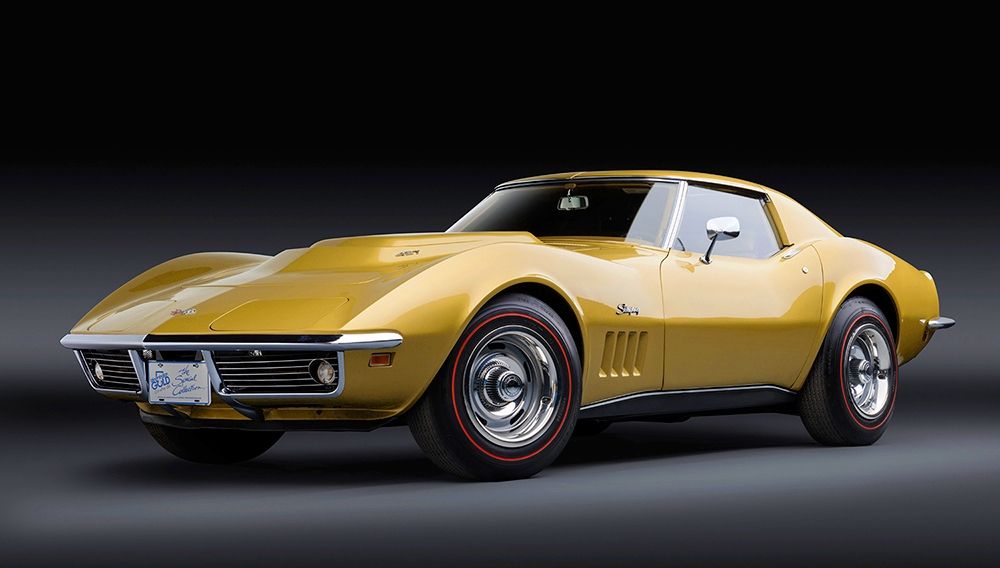
.jpg)
